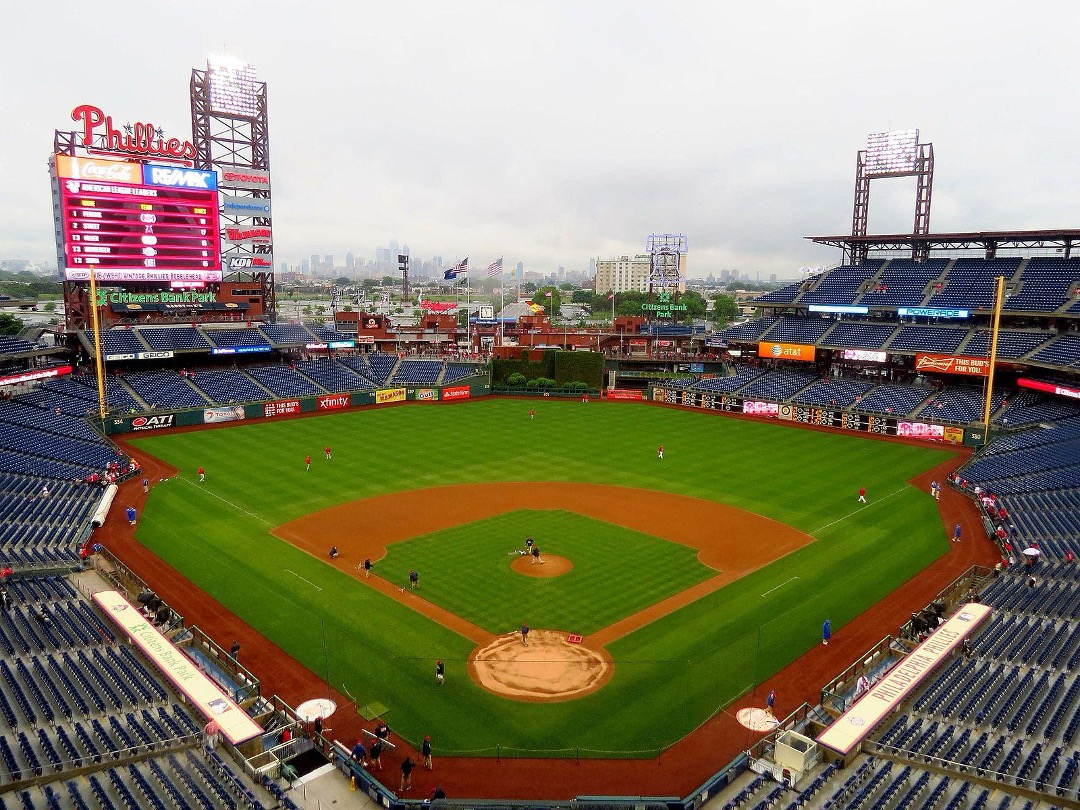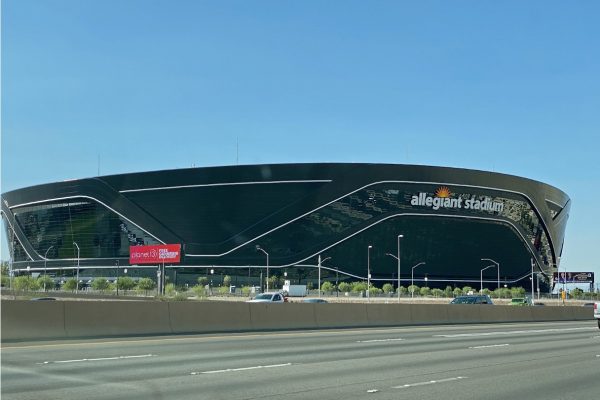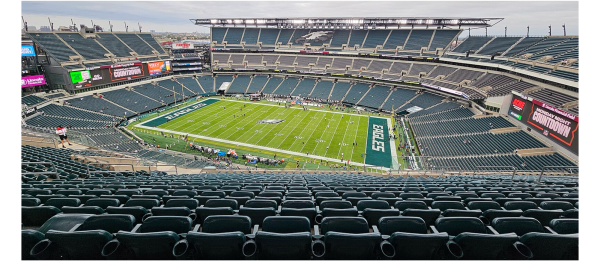
Citizen's Bank Park hosts the Philadelphia Phillies in South Philadelphia (redlegsfan21 from Wikicommons)
Baseball season has begun and millions of fans cannot wait to see their teams in action and catch a game at their hometown stadiums. As fun as the games can be, however, the negative environmental impacts of the stadiums cannot be ignored.
As environmental sustainability efforts continue to rise around the world, stadiums continue to be an area of concern. They can use up to 20,000 kilowatts of electricity in just a one-day span, create mountains of waste, and use thousands of gallons of water in a world where water is scarce.
People look to sport for entertainment and an escape from reality. This means people in sports have a unique position to advocate for change. If others see the sustainability efforts teams are putting in, it can raise awareness and lead to others living a more sustainable lifestyle.
“Athletes are among the most influential people on the planet and together with their managers, fans and others involved in organized sport, must contribute to global efforts to combat climate change,” said U.N Deputy Secretary-General Amina Mohammed.
According to Power Integrations, a leading figure in semiconductor technologies for high-voltage, one sporting event normally consumes between 10,000 to 20,000 kilowatts a day. This is due to lighting, air conditioning, concessions, broadcasting, and much more. With 81 home games in the MLB, one stadium is consuming up to 1.6 million kilowatts, or 1620 megawatts, a year. Most homes do not use 1,000 kilowatts a month.
Teams are starting to find other ways to power their fields. The Las Vegas Raiders have created a state-of-the-art stadium to combat waste and unsustainable systems. Allegient Stadium in Las Vegas, where the Raiders play, entered a 25-year agreement with NV Energy to get electricity from a 621,000 solar installation in Nevada’s desert. This made Allegiant Stadium the first ever 100% renewable energy powered stadium in the NFL.

Allegiant Stadium has become the gold standard of what a sustainable stadium looks like in the modern day. They use a biomass machine to compost their field’s grass, mixing soil and grass clippings. They have a food collection program that stops waste from piling up, as well as water diversion that limits the amount of water used and cuts done on emissions.
“To really address climate change, every sector—not just sport, not just agriculture, not just energy, transport, whatever—every sector has to be making a difference,” Rob Wilby, professor of hydroclimatic modeling at Loughborough University, told Time Magazine. “There’s no exemptions here if we’re really serious about tackling climate change.”
According to the Rapid Transition Alliance, the global sport sector is estimated to be responsible for about 50-60 billion tons of CO2e per year, which is the equivalent of 11 to 13 billion cars’ worth of emissions. However, due to the renewable energy used by the stadium, Allegiant Stadium is responsible for 0% of electricity-related emissions, according to NZero.com.
Christopher Sotiropulos, Vice President of Stadium Operations at Allegiant Stadium, spoke to NZero, saying that “It’s important to have visibility into our carbon emissions, understand where they are coming from and how we can decrease them moving forward. This will be impactful not only for us, but for others in the world of sports looking for examples of sustainable business in our industry.”
Other teams have been attempting to become more sustainable for years. The Philadelphia Phillies launched their Red to Green sustainability program in 2008, becoming the first MLB team to join the EPA’s Green Power Initiative. The team has offset 100% of their electricity usage by purchasing Green-‐e certified Renewable Energy Credit (RECs). representing electrical energy generated by wind and solar power. The team also was a major sponsor for the Keystone Solar Project, the largest solar project in Pennsylvania.
“The Phillies are smart on green energy choices,” said Brent Alderfer, President of Community Energy, a Pennsylvania-based renewable energy supplier. “They know that green energy dollars invested in generation in the home region delivers something real, here at home, for the long-term. We are very pleased to join the Phillies and be a part of their ongoing Red Goes Green efforts.”
In 2024, the team won the Power Pitch award, which is given to the team who demonstrates great efforts in preserving power and energy usage.

Lincoln Financial Field, home of the Super-Bowl Champion Eagles, is a certified LEED Platinum building due to the sustainability changes the stadium adopted. This includes replacing the stadium’s lights with LEDs, reducing wattage by 50%, diverting 99% of waste from landfills, and operating on 100% clean energy. This is done by the 10,456 solar panels the stadiums have in use.
“By prioritizing sustainability, the Philadelphia Eagles are leading the way in their industry and helping USGBC continue towards our goal of green buildings for everyone within this generation,” said Peter Templeton, President and CEO of the U.S. Green Building Council (USGBC).
Stadiums use a large amount of water per year. The Routledge Handbook of Sports and the Environment states that “an NFL football field is 57,600 square feet (360′ by 160′). This field size needs approximately 36,000 gallons of water, if one inch of water is to be applied to the entire field.” Other uses for water in stadiums include washing seats, landscaping around the stadium, and, of course, the bathrooms. In a world where water scarcity is popping up more and more, this amount of water usage is a huge issue.
Waste management is another issue sports teams are trying to address. According to WasteDive, a publication for the digital technology industry, stadiums hold tens of thousands of people who create trash at an estimated rate of one to two pounds each. To cut down and prevent this amount of waste, teams have taken a variety of steps. The Eagles created filtered water fountains throughout their stadium, eliminating over a million plastic water bottles. Teams also donate unused food to local food banks rather than simply throwing it away, helping eliminate waste.
Stadiums are becoming more and more sustainable as the need for sustainability becomes more and more apparent. Whether it’s Allegiant Stadium or Lincoln Financial Field, stadium sustainability is key moving forward.